The desire to transfer a pet to a proper and complete diet in the form of dry food sooner or later visits every pet owner who is often forced to be absent for a long time during the day. Ready meals, indeed, can be a simple and convenient solution to the problem of feeding. But how to train a cat to dry food in adulthood? Often, pets who have received only natural food since childhood, simply refuse an unusual treat.
How to transfer a cat from natural food and wet food to dry? How long does it take, is it possible to do without radical measures such as the complete cessation of the delivery of the usual food? What common mistakes are best avoided when feeding an animal? Only after studying the answers to all these questions, it is worth moving on to decisive action in practice.
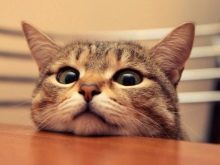
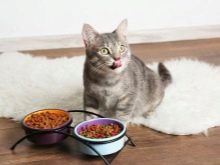
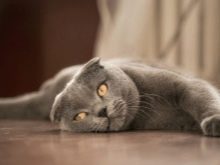
Indications for use
For what reasons there is a transfer of the animal from the usual diet to dry - consider the most common.
- The imbalance of the diet. If the animal does not initially eat any foods, it may lose valuable amino acids, vitamins and minerals that ensure normal development and preservation of health.
- Health related dietary restrictions. At high risks of developing urolithiasis in sterilized cats, it is recommended that the animal be transferred to ready-made food.
- Lack of control over the freshness of products. If there are doubts about the quality of meat, fish, other ingredients of a cat's diet, prepared food will allow you not to waste time searching for them.
- The need for long-term storage of finished food. Dry food is not ventilated, eliminates the risk of poisoning, reproduction of pathogenic microflora.
- Taste variety. To offer the animal shrimp or salmon paste for breakfast, and not every owner is ready for dinner for beef.
- Compliance with the diet. If a pet has gained weight on a normal diet, it can be quite difficult to determine the optimal calorie intake. Dry food allows you to build a diet based on a certain calorie content and frequency of meals.
- Features of the breed. Almost all purebred cats need a specialized diet, taking into account their individual needs.
There are other factors that can influence the decision to transfer a pet to a fully prepared diet. In any case, the process of changing the type of food will require some time and effort.
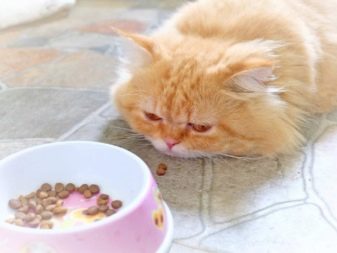

At what age can I be taught?
The process of transferring an animal from ordinary food to dry food can be started at any age when the weight of the adult animal is current for the breed. Even if a cat all his life ate exclusively food prepared by the owner or, on the contrary, lived on the street and ate irregularly, in any case, switching to a full-time menu would be useful for her. Upon reaching the year and until old age, the selected time will be successful.
In addition, special nutrition is prescribed to pets who have undergone castration or sterilization, as well as having other medical conditions.
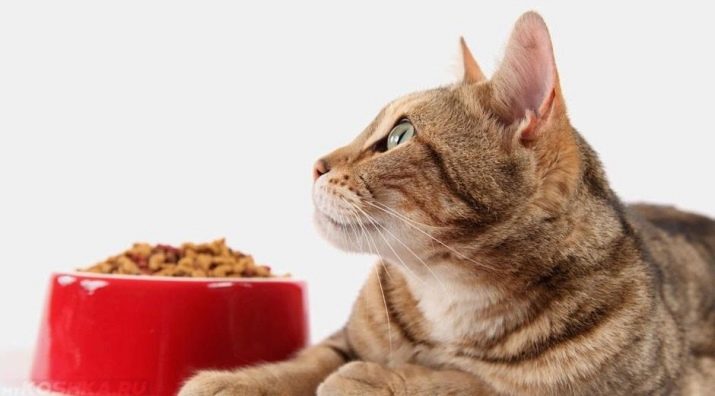
Amount of time needed
Consider how many days it takes to force a pet to completely change its natural diet to finished feed for industrial production. Cope with the task in one or two days will not work. It will take much more time, on average - from 7 to 10 days, and the process should take place gradually. You can’t immediately deprive the animal of a normal diet, it can be dangerous to health.
The older the cat, the more difficult and longer the transition to a new diet will be. But in any business, consistency and rigor are important - do not interrupt the process that has begun, go on about the animal. When combined with wet food during the transition period, it is recommended to use exclusively products of the same brand, so that the pet quickly gets used to its taste.
Phasing is manifested in the volume of dry food added to the usual food. On the first day, you can offer the cat 10% of the new diet directly in granular or soaked in broth form. Dry food is mixed with ordinary food. Daily, its volume should increase. An average increase of 10-15% will allow spending no more than 10 days on the transfer.
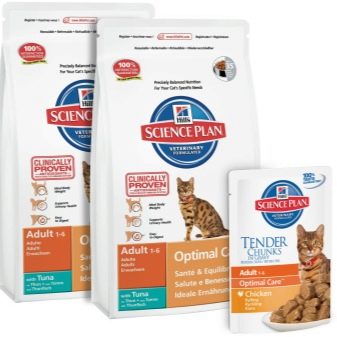
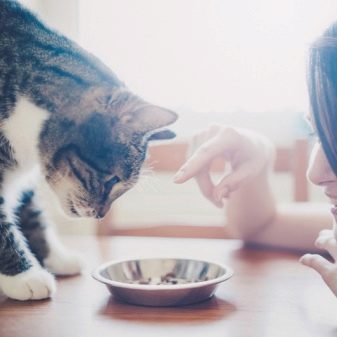
It is important to stop stirring the food from the third day of replacing the diet, and from the fifth day it is no longer mixed with ordinary food, but given in a separate portion. One feeding necessarily includes only dry ready meals. By the tenth day, you should completely abandon any other food, carefully monitoring the health status of the pet. Alarming symptoms include:
- persistent upset stool;
- pain, colic in the abdomen;
- reduction in the amount of eaten;
- lethargy, changes in behavior;
- the appearance of discharge from the eyes, nose, ears, indicating an allergy;
- manifestation of aggression against the owner.
If the symptoms accompanying a diet change seem alarming, you should consult a veterinarian. In the transition period, while the body is being reconstructed for new food, one should observe the animal, count the number of times it goes to the toilet.

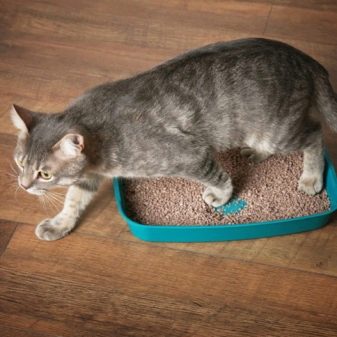
The importance of water in transition
Obtaining a sufficient amount of fluid is very important for a cat switching to dry food. The animal must have constant access to clean and fresh water. The volume of fluid needs of the pet during this period, indeed, increases, and its lack will lead to excessive dry stool, more rare urination, and general dehydration of the body.
When switching to a new menu, animals are offered a much larger amount of water. At first, drinking bowls are best placed in several places. You can offer a large capacity or purchase a special drinking fountain, many thoroughbred animals prefer running water.
If the pet is capricious, it is worth paying attention to various modern devices or simply installing flatter plates, allowing him not to feel discomfort while drinking.

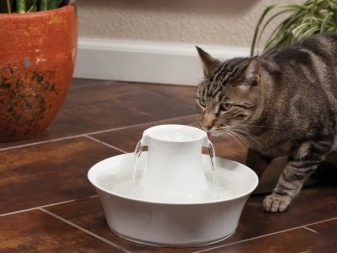
General translation rules
In accustoming a cat to dry food, you need to remember a number of simple rules, allowing to make the situation less traumatic for the animal.
- Stage by stage. You should act gradually, carefully and carefully. You need to be prepared for a change in eating behavior, stool disturbance, flatulence.
- Lack of coercion. Even if the feed remains untouched, it can be chopped, mixed in ordinary food. It is worth getting the animal accustomed to the smell and taste of new food.
- Combination with wet feeding. It is worth stocking up with spiders or canned goods of the same manufacturer, and in the first days to give them along with dry food.
- When mixing granules need carefully combine with the usual food, to make it harder for the animal to separate them.
Choosing the right food is a difficult task. It is worth offering the pet a choice of products from several manufacturers. Perhaps after finding the desired flavor combination, the problem of getting used to unusual food will be completely solved.
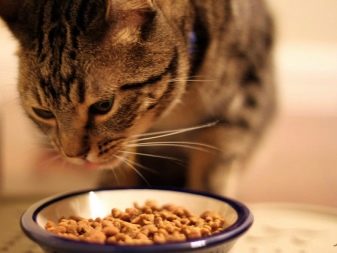
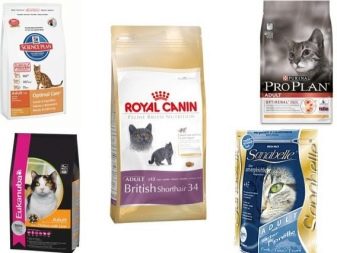
After wet food
The transition from wet to dry food usually does not cause difficulties, especially if it occurs without changing the brand. To facilitate the assimilation of food, it is worth increasing the dose of the granular version gradually.
Another important point: access to food should be convenient for the animal, permanent and comfortable. The volume of water provided also needs to be increased, tracking in the first days all the pet's health indicators.
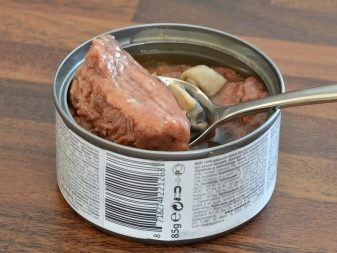
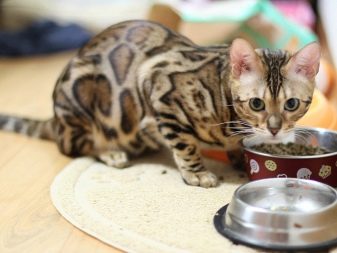
After natural food
By accustoming a cat to dry food after a natural meal, you must definitely choose a food that can completely replace the previous diet. It is worth giving preference to products of premium classes, superpremium, which includes natural meat of the usual varieties. This category includes granules from Hills, Royal Canin, Eukanuba, Acana. Pedigree animals, castrated and sterilized cats are selected food with the corresponding marks on the package.
When switching to dry food, owners often find it difficult to accurately dose the pet's food. Do not allow overeating, the daily amount of feed for an adult animal is 30-35 g / kg of body weight. The time of receipt of food should also be carefully observed, ensuring the formation of the correct daily regimen.
After a complete transition to dry food, do not give a cat or cat food from your table. Fermented milk products, boiled vegetables, herbs are rarely offered. Vitamins, mineral supplements should not be given additionally.
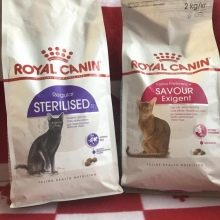
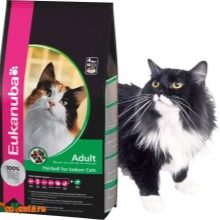

Common mistakes
There is a list of the most common mistakes made by almost all pet owners who begin to transfer their pet to dry food. The first thing to avoid is forceful methods of influence. This can scare away the cat and even cause psychosomatic reactions of a negative nature. Veterinarians advise acting softly, unobtrusively, gradually helping the animal adapt to an unusual diet.
Another erroneous step is to refuse to feed the cat with any other products. If the pet categorically refuses to eat ready meals, instead of the usual dishes, it is worthwhile to gradually and gently offer him dry food. The cause of trouble can be poor absorption of food.
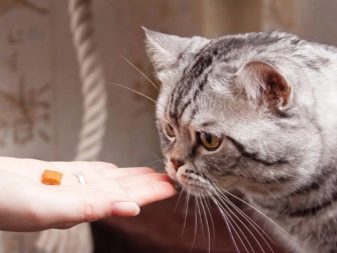
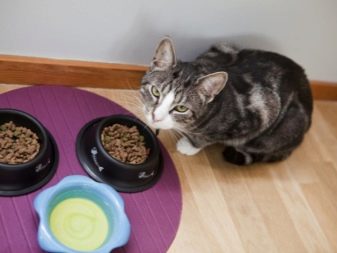
Buying the cheapest pet food for a pet that has to change its diet is a very bad decision. Cheap products from the mass market segment are not suitable for thoroughbred animals.The older the cat, the more carefully you will have to select food. The best solution is super premium or holistic fodder made from natural raw materials by well-known brands. In 99% of cases, an allergy to ready-made food is associated with the purchase of low-grade goods, and not at all with individual intolerance to the ingredients.
Failures of the animal to eat dry food may be associated with the fact that it is not stored properly or loses its attractive taste and smell. The pellet container must be tightly closed. After eating, the bowl with leftover food should be emptied, thoroughly cleaned of leftover food.
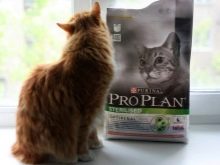
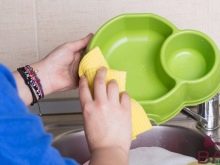
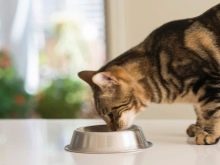
See how to switch your cat to dry food in the next video.


































